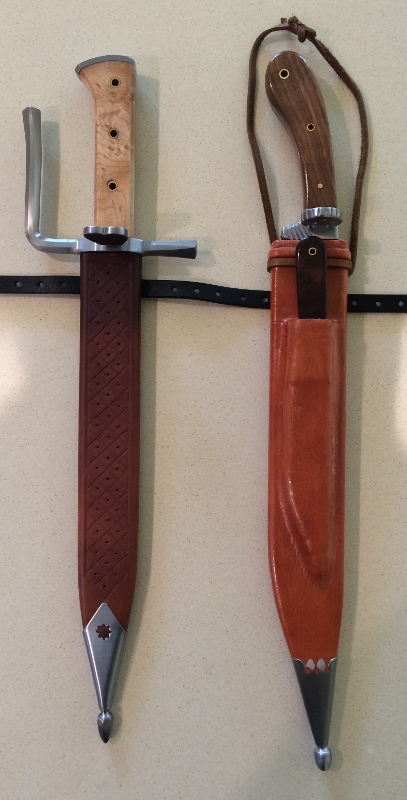Messer and Bauernwehr happen to be the two most common big knife types from the same time period (later XV to maybe early XVII, mostly XVIc), geographical area (German lands and neighboring countries), and even social environment (typically belonging to a commoner, though not necessarily a poor one).
There were a lot of discussions (including on this forum) touching on commonalities and differences between them.
I think this pair makes a very nice illustration for such a discussion (being of the same size and from the same maker):
- in common are relatively heavy single edged blades; presence of Nagel; and full tang handles with pinned scales.
- really the only clear difference is Messer's guard with prominent quillons (in this case also knuckle guard but it is relatively uncommon) vs. Bauernwehr's bolsters.
Both types by their shape appear to be functionally a combination of tool and sidearm. But to me at least it seems that Messer's proper guard in general makes it primarily a weapon that in a pinch can be used as a tool; while Bauernwehr is balanced at least equally between the two uses. And, BTW, this must be the reason why sword sized Messers are rather common, while such Bauernwehr are rare.
Makes sense? Am I missing anything?
